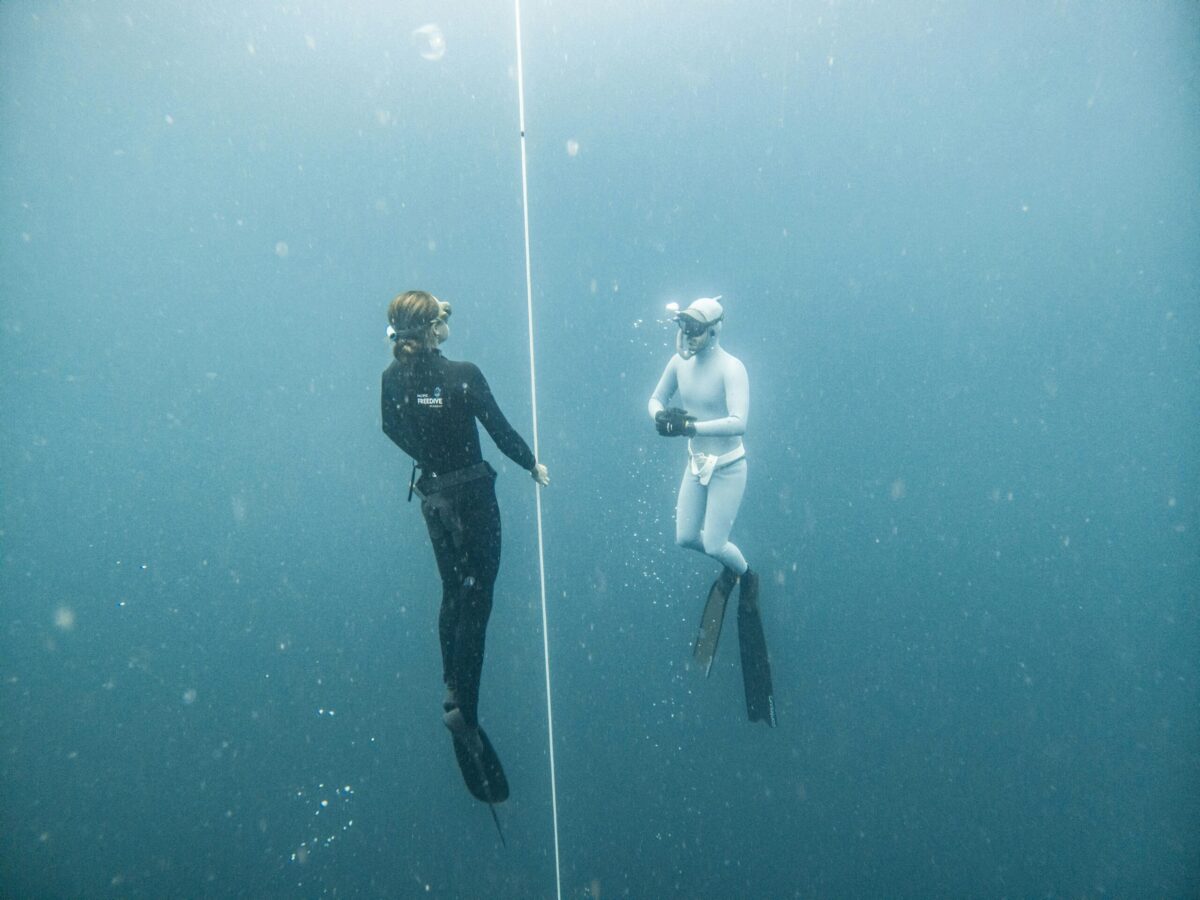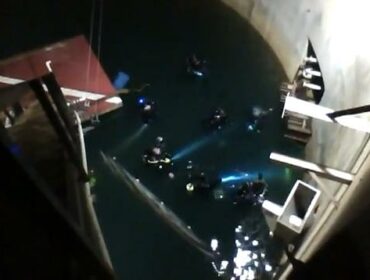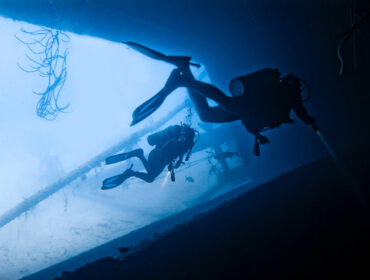There’s something a bit attractive, exciting and mysterious about diving at a deep dive site that extends to or beyond a depth of 40 meters/ 130 feet, the maximum edge of recreational diving. Intrigued with the challenge that deep diving or confined space diving (cave diving) presents, divers are often tempted to take that all so thrilling plunge into the depths, throwing caution to the winds. However, descending below 40 meters with a single cylinder and standard recreational scuba diving gear isn’t brave nor exciting…it’s being stupid.
That said, and although “dangerous” is a subjective term, there are a number of dive sites that have earned a reputation of being dangerous or let’s use challenging instead, mostly because of unfortunate diving accidents that have resulted in deaths there. Keeping in mind to always dive within your comfort zone & experience, with proper training, planning and the right diving equipment, and not to forget to leave the macho ego behind (as most dive accidents have occurred to those who are superficially fairly qualified, it’s important to remember the c-card doesn’t make you an invincible diver!), if you dive safe and responsibly there’s no reason not to dive these dive sites.
Here’s a look at our list of Top 5 Dives Sites in the World that are considered deep or challenging –
1. The Shaft Sinkhole, Mount Gambier, Australia
In a tiny hole in the middle of a huge flat field where you’d least expect to be diving, lies one of Australia’s most infamous but truly spectacular cave dive site- The Shaft. Aptly named because of it’s entrance which is an inconspicuous narrow shaft water drain, with only a swinging ladder to descend to the water 8 meters down the dingy shaft. Your scuba tanks and kits are lowered down to you to kit up in the water, in the darkness. But once you’ve conquered the task of all the prep, the small lake chamber has a huge underwater chasm with some of the clearest waters in the world. The immense cavern is impressive to say the least. An outstanding dive, the shaft is definitely one of the most unique sinkhole dives in the world.
Why it’s challenging: Well other than the fact that there is only one small entry and exit point which isn’t the easiest to access, the cavern leads off into two tunnels located at either end of the cavern. One leads of to a depth of around 85 meters (278 feet) while the other 120 meters (almost 400 feet). Divers have made the unfortunate mistake of getting carried away and not correctly estimating their supply of air to make it back to the exit, a crucial part of planning a deep cave dive. Today, the CDAA (Cave Divers Association of Australia) limits divers to a maximum depth of 40 meters at all it’s sites in Mount Gambier to avoid diving accidents like those.
2. Dahab Blue Hole, Egypt
Easily one of the most famous dive sites of not only the Red Sea, but the World over is the Blue Hole off the Sinai Peninsula coast a few miles north of Dahab in Egypt. Known among diving circles as one the ‘World’s Most Dangerous Dive Sites’ its inky blue depths have claimed a number of lives, but the Blue hole has several aspects that make it special as it continues to draw divers from around the World to it.
Why it’s challenging: Although there is an easier entrance, many prefer entry through ‘The Bells’ – a dive site formed where a deep groove cuts into the reef top just north of the Blue Hole at Dahab. Entry into the Bells is like that of a chimney and often done head first. It’s a 27-30m descend into a completely vertical drop off into a clear stunning blue waters. The blue hole walls itself goes down to a depth of around 100meters and is bottomless with unfathomable depths. The cliffs around the dive site bearing lost divers epitaphs serve as a somber reminder for all to respect the limits and realities of the sport.
3. Eagle’s Nest Sinkhole, Florida
Considered the ‘Mount Everest’ or the ‘Grand Canyon’ of cave diving, the Eagle’s Nest is one of the most intricate and challenging dive sites one can dive. Located on the Chassahowitzka Wildlife Management Area property, near Weeki Wachee, the sinkhole first appears to be a very unimpressive, scummy-looking pond. Hidden below it astounding depths of around 300 feet (91metres), the Eagle’s Nest Sinkhole in Florida has chambers as large as gymnasiums and crystal-clear water. [*Above image- Times photo: Maurice Rivenbark]
Why it’s challenging:Only for highly experienced cave divers and the technically sound, the descent the Eagle’s nest is similar to that of a chimney and hundreds of feet below it opens up into a large cavern called “the Main Ballroom”, beyond which are longer tunnels and crannies that go even deeper. While cave diving isn’t for everyone, a number of divers have perished attempting to explore this site in particular. The Sinkhole’s challenging caves and and harsh conditions are not to be taken lightly when considering to dive here.
4. Cenote Esqueleto Temple of Doom, Mexico
Just outside of Tulum, Mexico is Cenote Esqueleto, known rather ominously as the ‘Temple of Doom’. This cenote is a mix of salt and fresh water and has a large canyon venturing off into passageways and caverns.
Why it’s challenging: Entering the cavern is said to be uncomfortable as there are no stairs leading down to the water. There is, however, a galvanized pipe ladder to help you ascend the ten feet from the water to the lip of the cenote. It’s a 25-foot-diameter hole with a large undercut ledge and features a multilevel maze of cave formations, boulders and stalactites dripping from the blanched white limestone. It’s all too easy to get lost in the dark cave system if you venture outside the area lit by daylight.
5. Devil’s Cave System, Ginnie Springs, Florida
The Little Devil, Devil’s Eye and Devil’s Ear in Ginnie Springs, Florida are three very different cave diving experiences offered all year round. There are 30,000 feet of mapped passageways and cave systems, all formed as a result of underground water working upon soluble limestone. This type of topography, called Karst, characterizes most of the principal cave systems in the world.
Why it’s challenging: There is a breakdown restriction about 200ft from the entrance to the Devil System called ‘the lips’. The currents are strong and at the Devil’s Ear, divers must take extra care because of the narrow vortex opening which can cause their gear to shift around.



